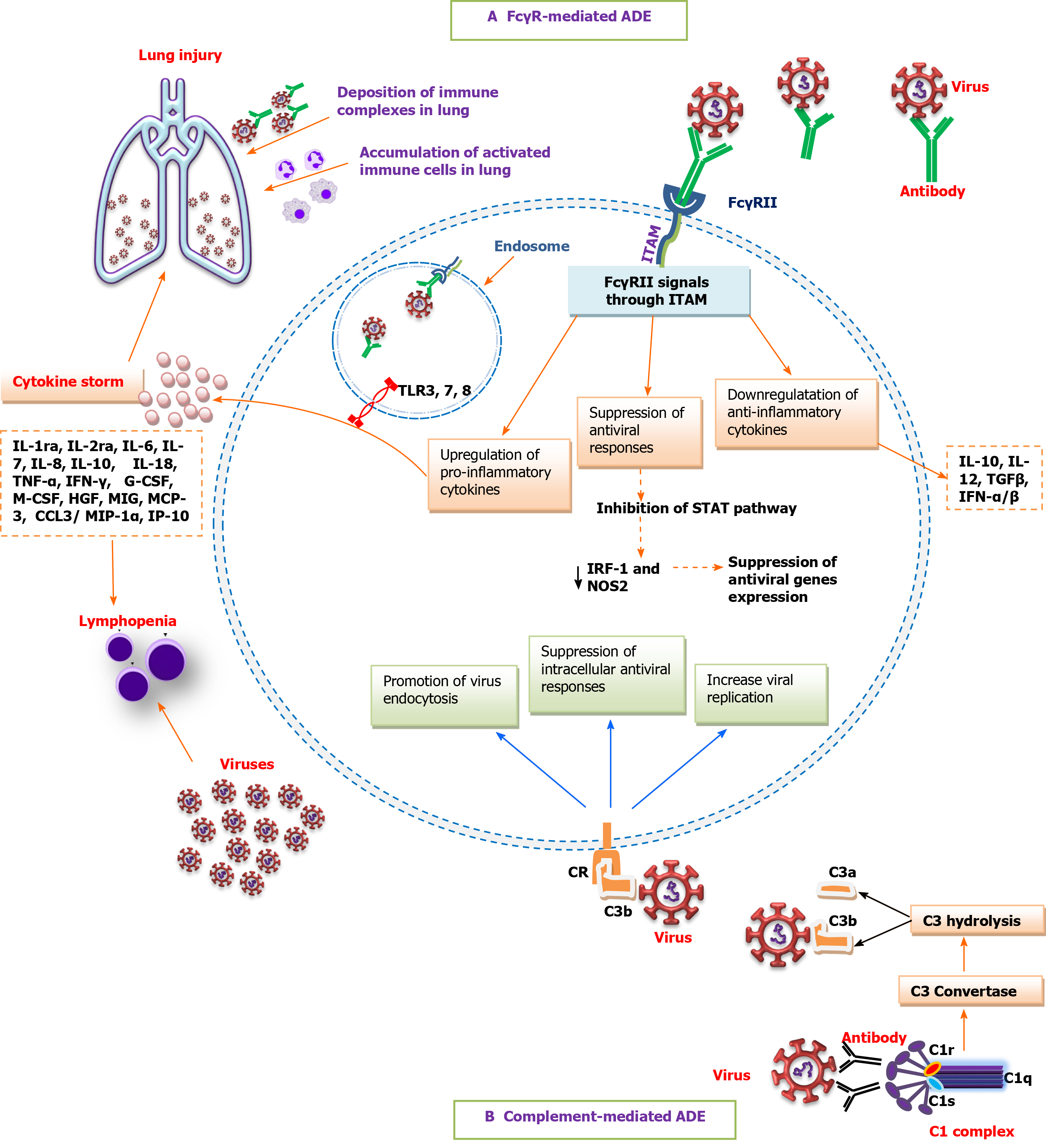Copyright
©The Author(s) 2021.
World J Clin Cases. Jun 26, 2021; 9(18): 4480-4490
Published online Jun 26, 2021. doi: 10.12998/wjcc.v9.i18.4480
Published online Jun 26, 2021. doi: 10.12998/wjcc.v9.i18.4480
Figure 1 Schematic representation of antibody-dependent enhancement of viral infections.
A: Fcγ receptor (FcγR)-mediated antibody-dependent enhancement (ADE): non-neutralizing antibodies bind to virus particles. Upon binding of virus-antibody complexes to FcγRII on antigen-presenting cells or B cells, FcγRII signals through an immunoreceptor tyrosine-based activation motif on its cytoplasmic tail to upregulate pro-inflammatory cytokines, downregulate anti-inflammatory cytokines, and suppress antiviral genes expression by inhibiting the signal transducer and activator of transcription (STAT) pathway and subsequent decrease in the antiviral transcription factors such as interferon regulatory factor 1 (IRF-1) and nitric oxide synthase 2 (NOS2), resulting in increased viral replication due to suppression of the intracellular antiviral responses. Following internalization, virus–antibody immune complexes in the endosomes initiate signaling through toll-like receptor 3 (TLR3), TLR7, and TLR8 to activate immune cells. The accumulation of activated myeloid cells in the lung promotes inflammation and acute lung injury; B: Complement-mediated ADE: virus-antibody complexes activate the complement cascade, resulting in the formation of complement-coated virions and subsequent interaction with complement receptor (CR) on CR-bearing cells. The activated CR initiates intracellular signaling to promote endocytosis of the virus, suppress intracellular antiviral responses and increase viral replication. Furthermore, the formation and deposition of immune complexes in the lung can lead to cell lysis and tissue damage. ITAM: Immunoreceptor tyrosine-based activation motif.
- Citation: Taherkhani R, Taherkhani S, Farshadpour F. Dynamics of host immune responses to SARS-CoV-2. World J Clin Cases 2021; 9(18): 4480-4490
- URL: https://www.wjgnet.com/2307-8960/full/v9/i18/4480.htm
- DOI: https://dx.doi.org/10.12998/wjcc.v9.i18.4480









